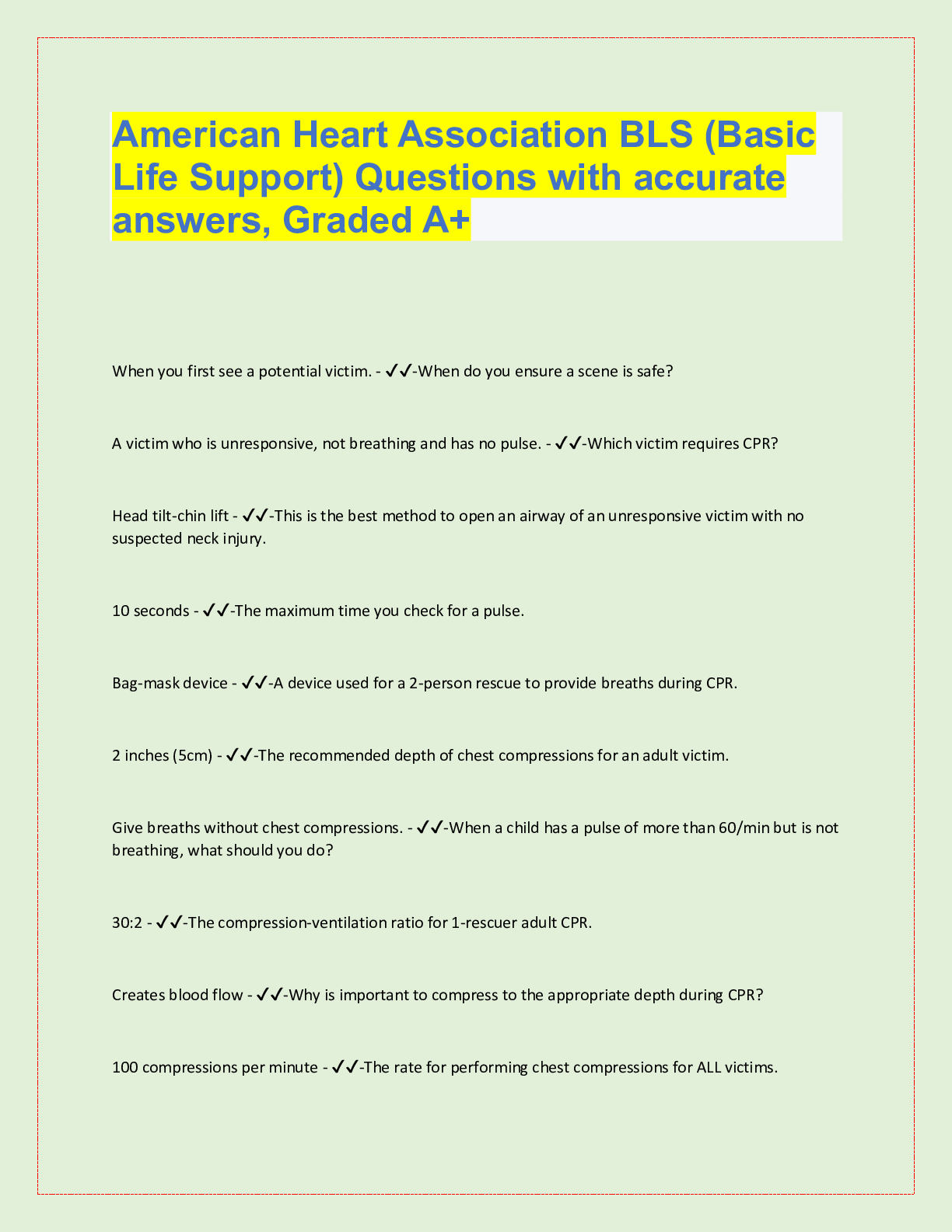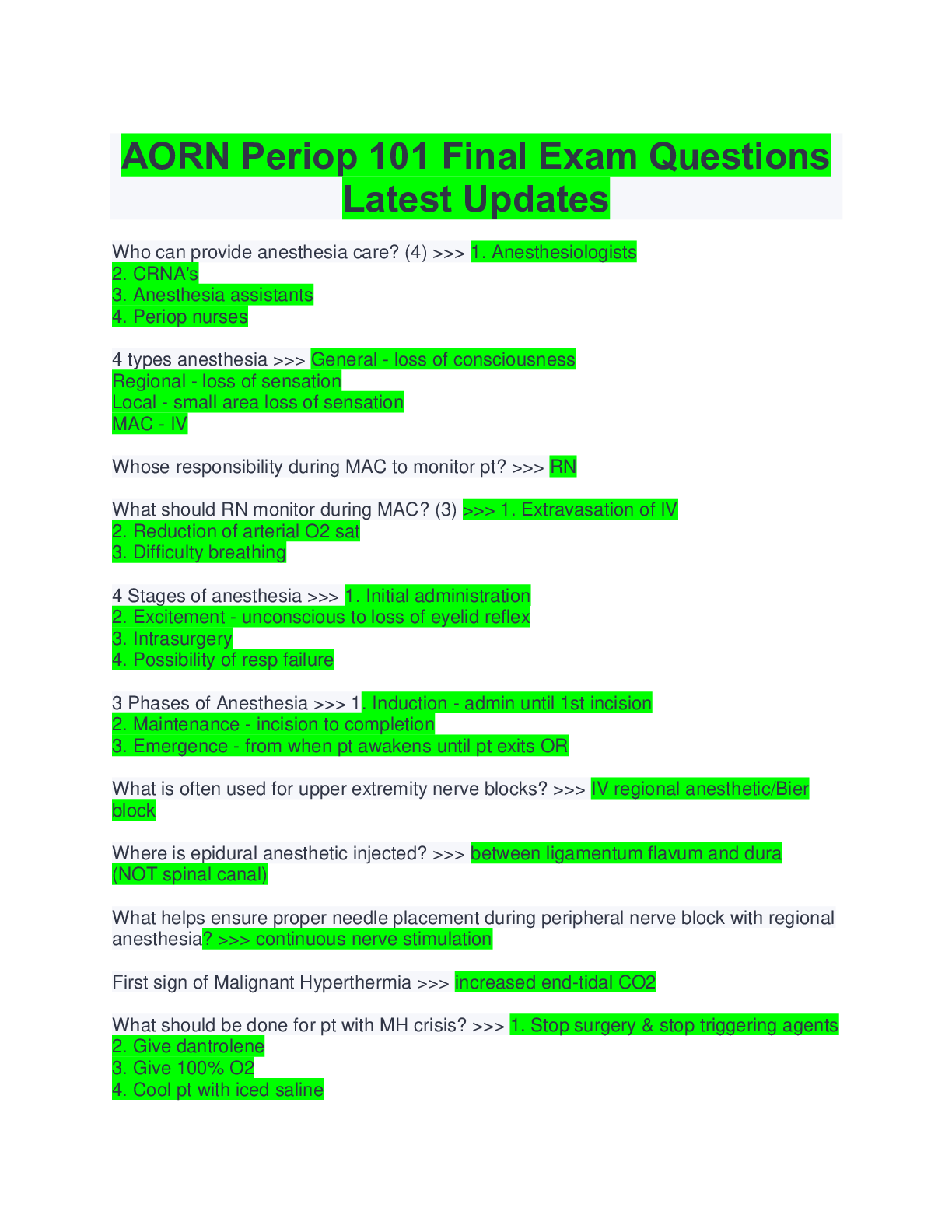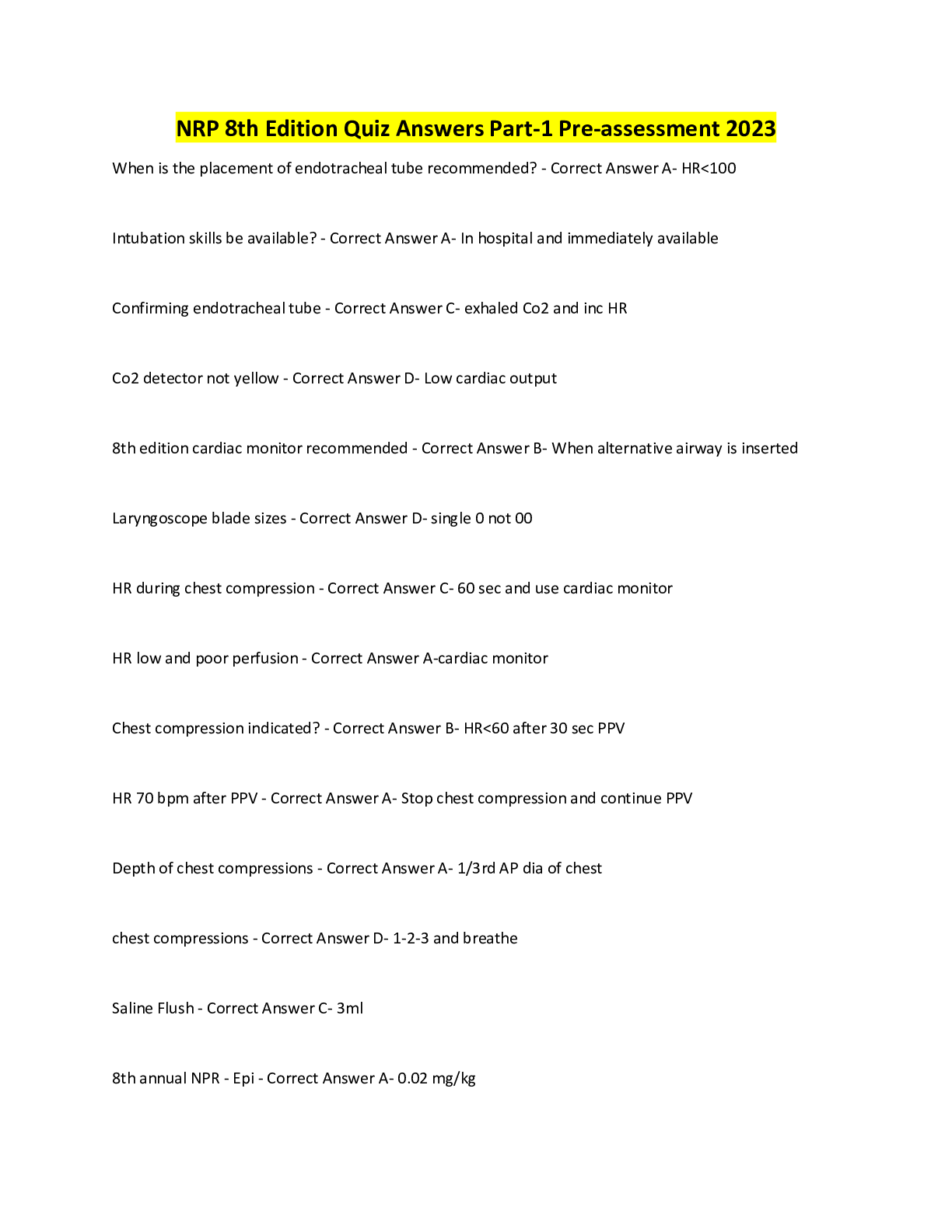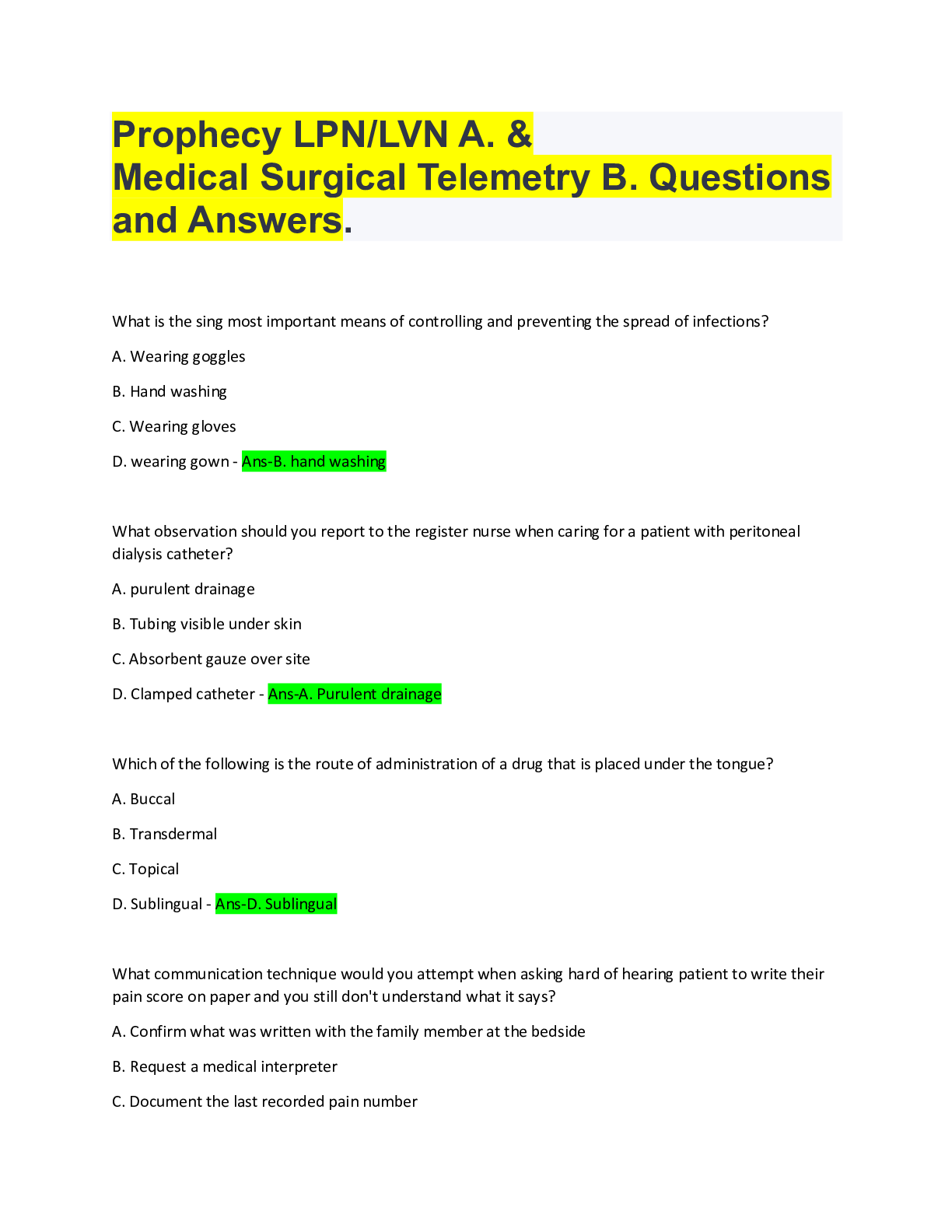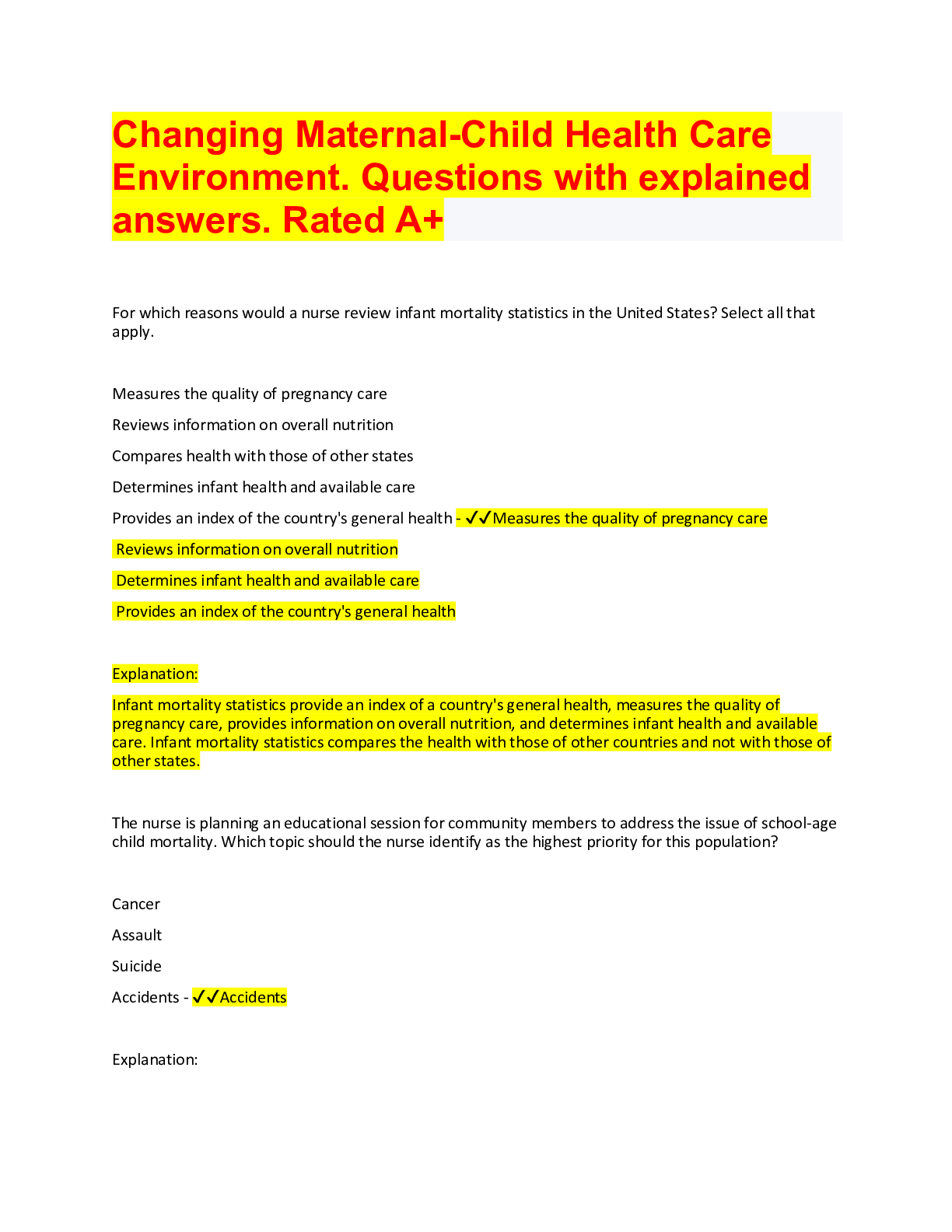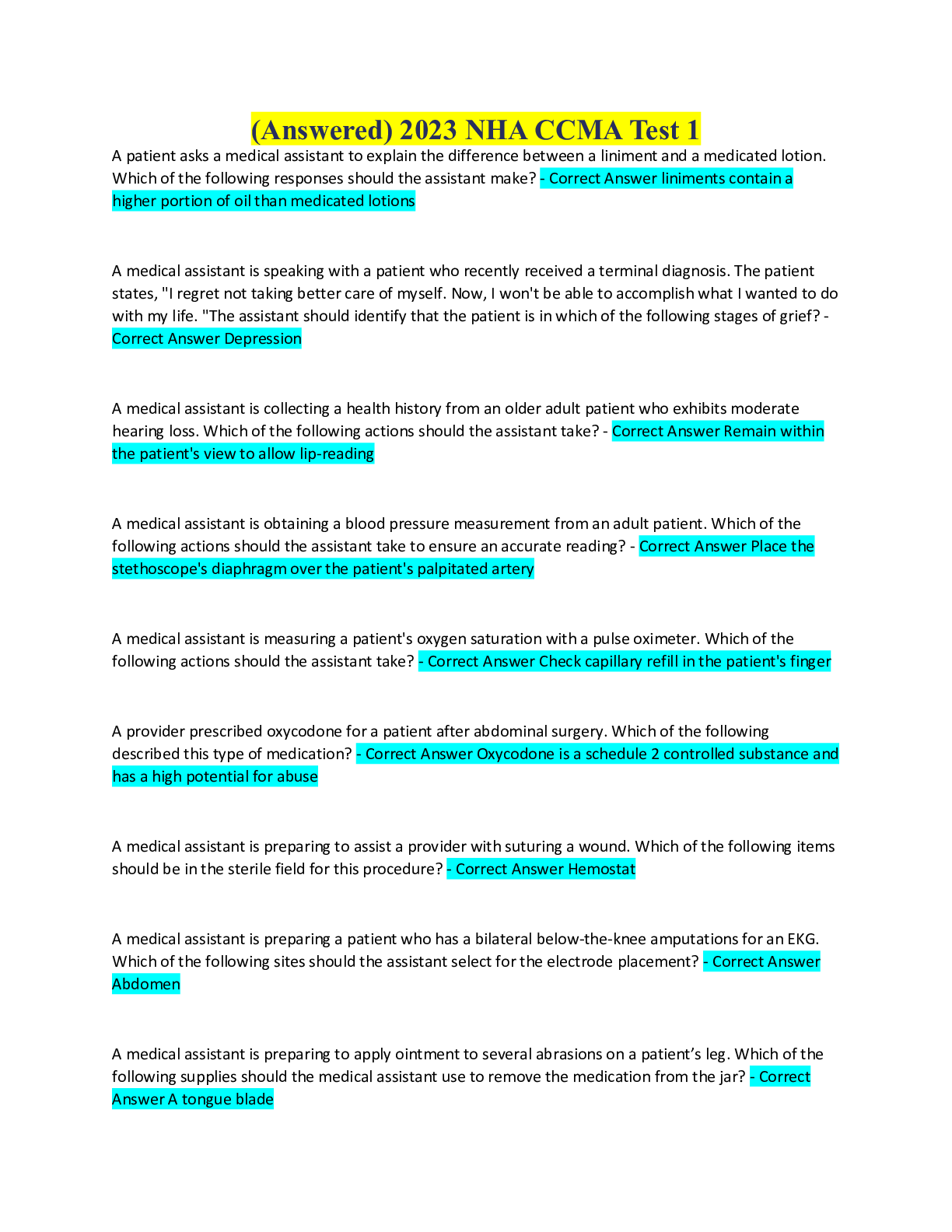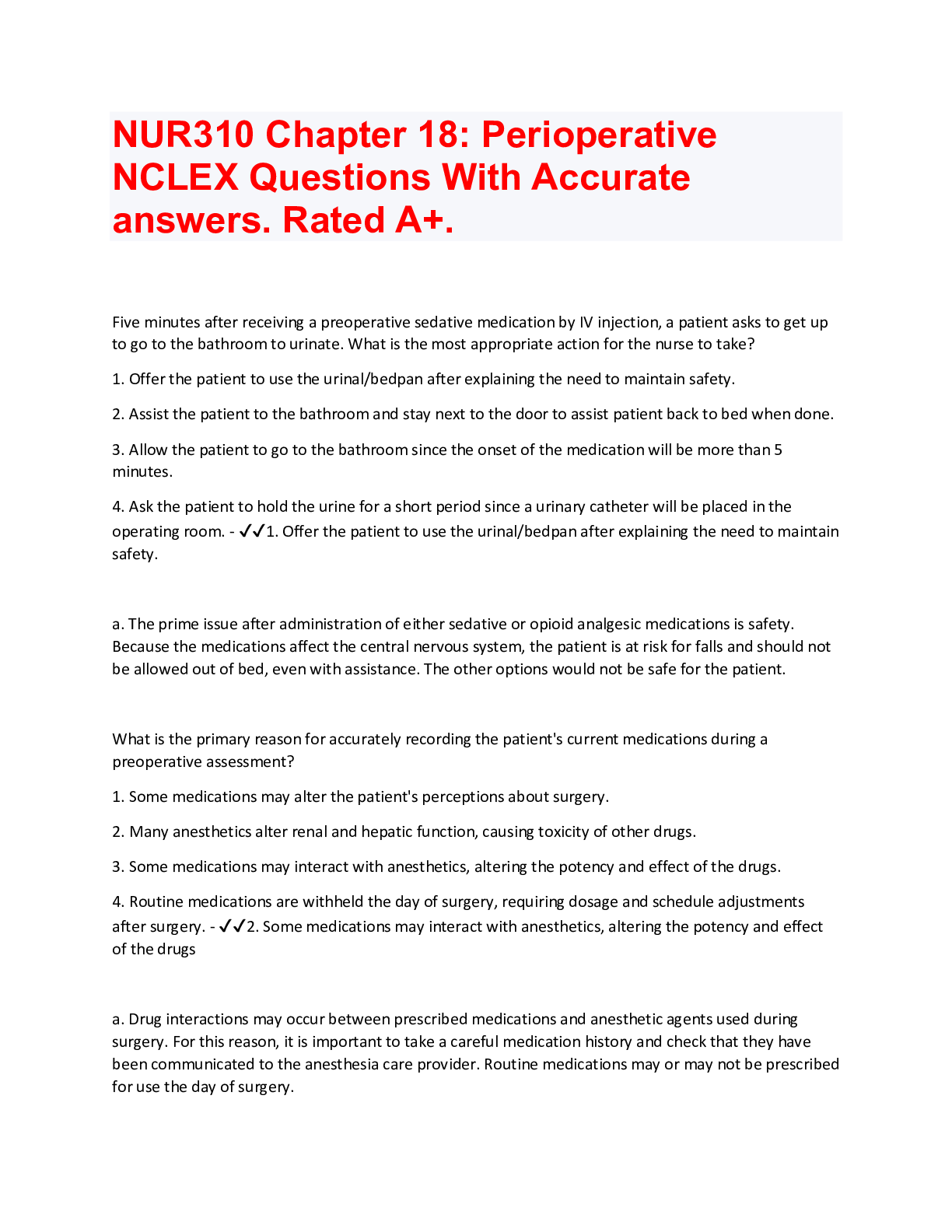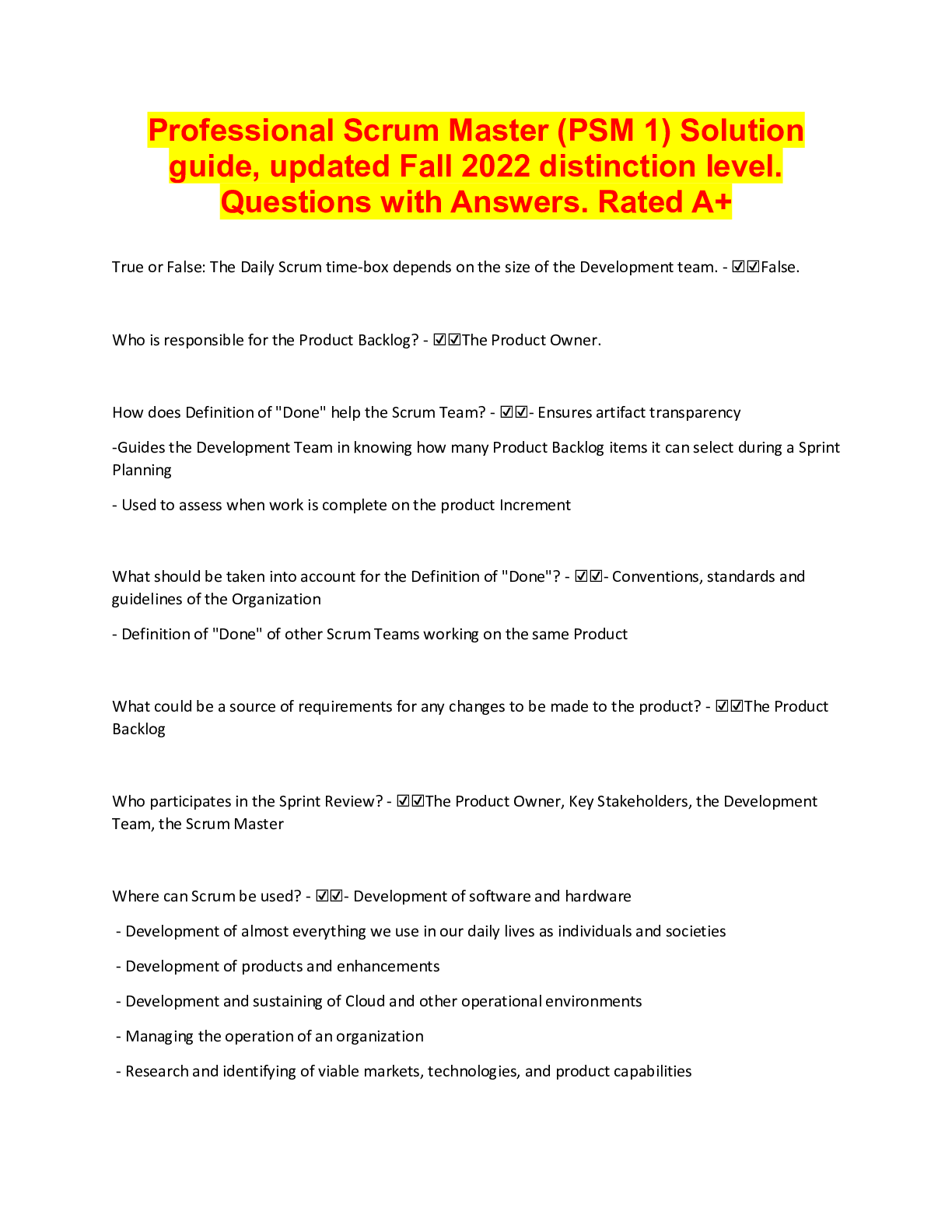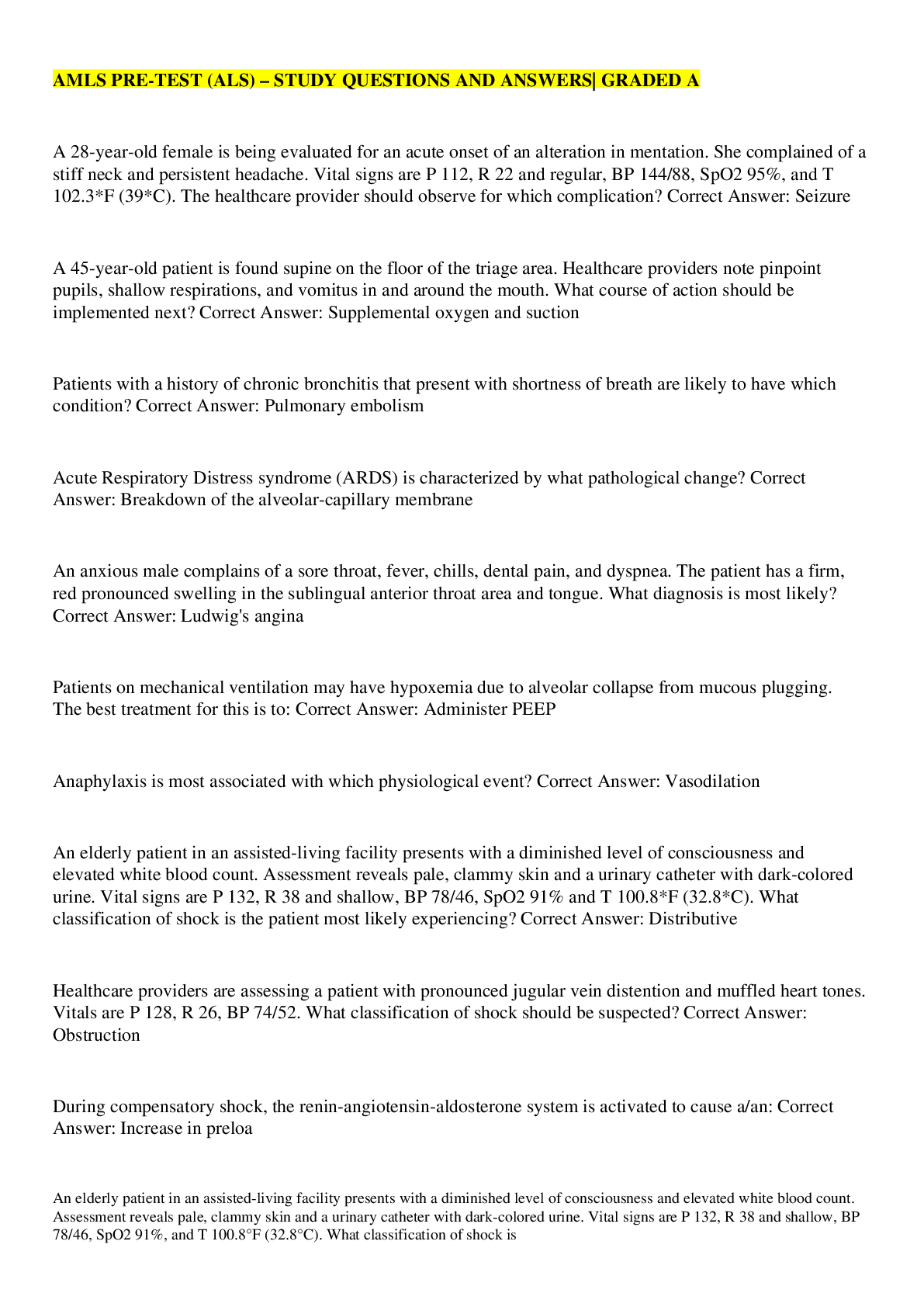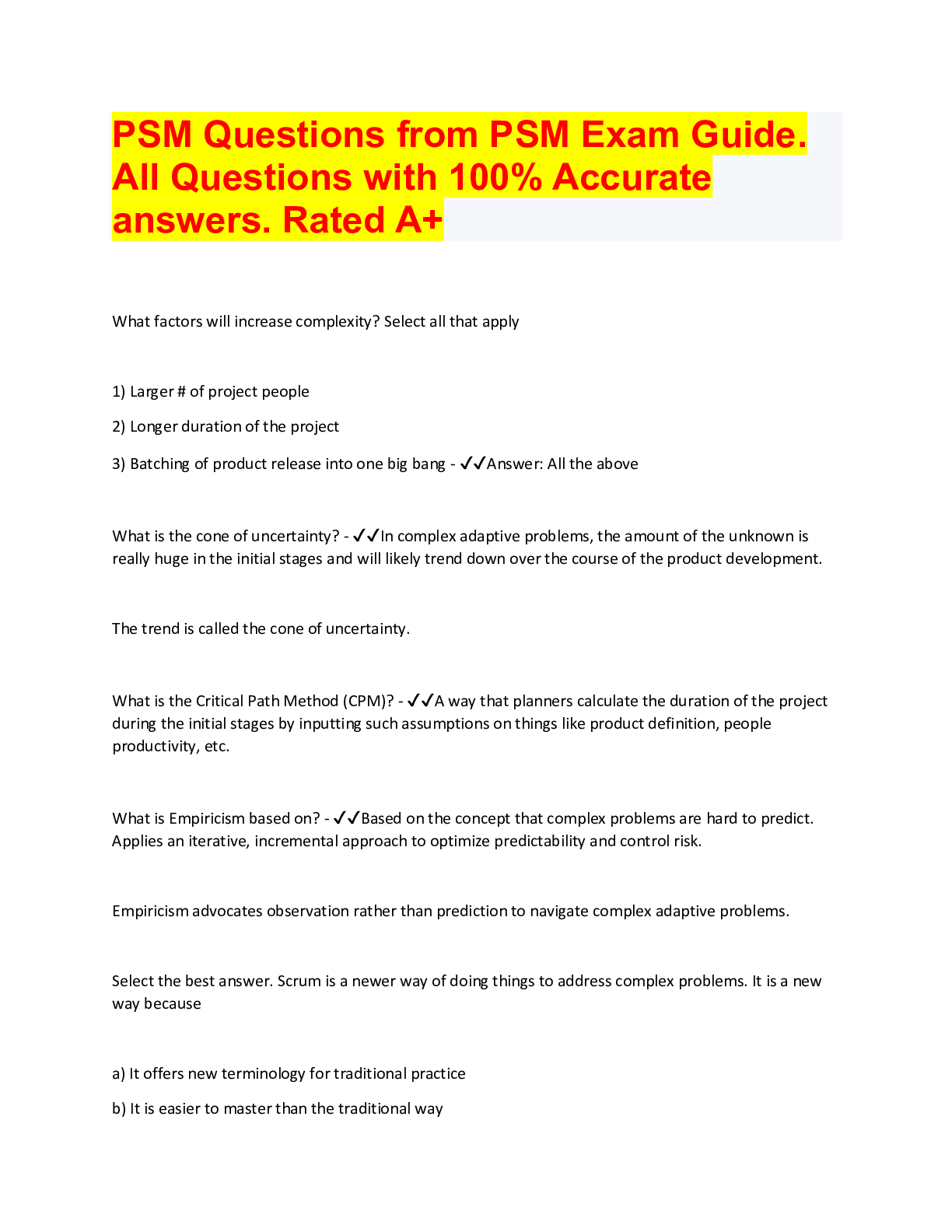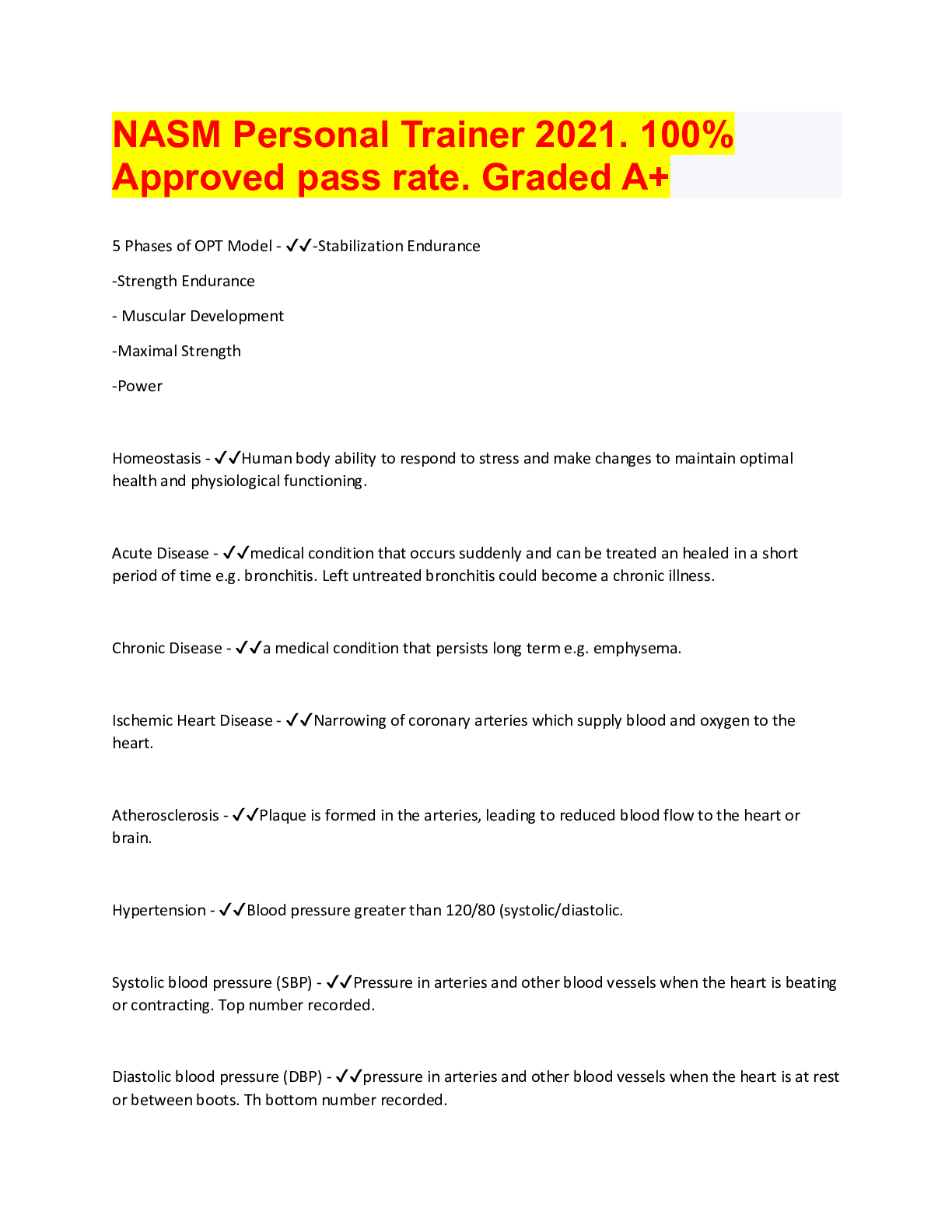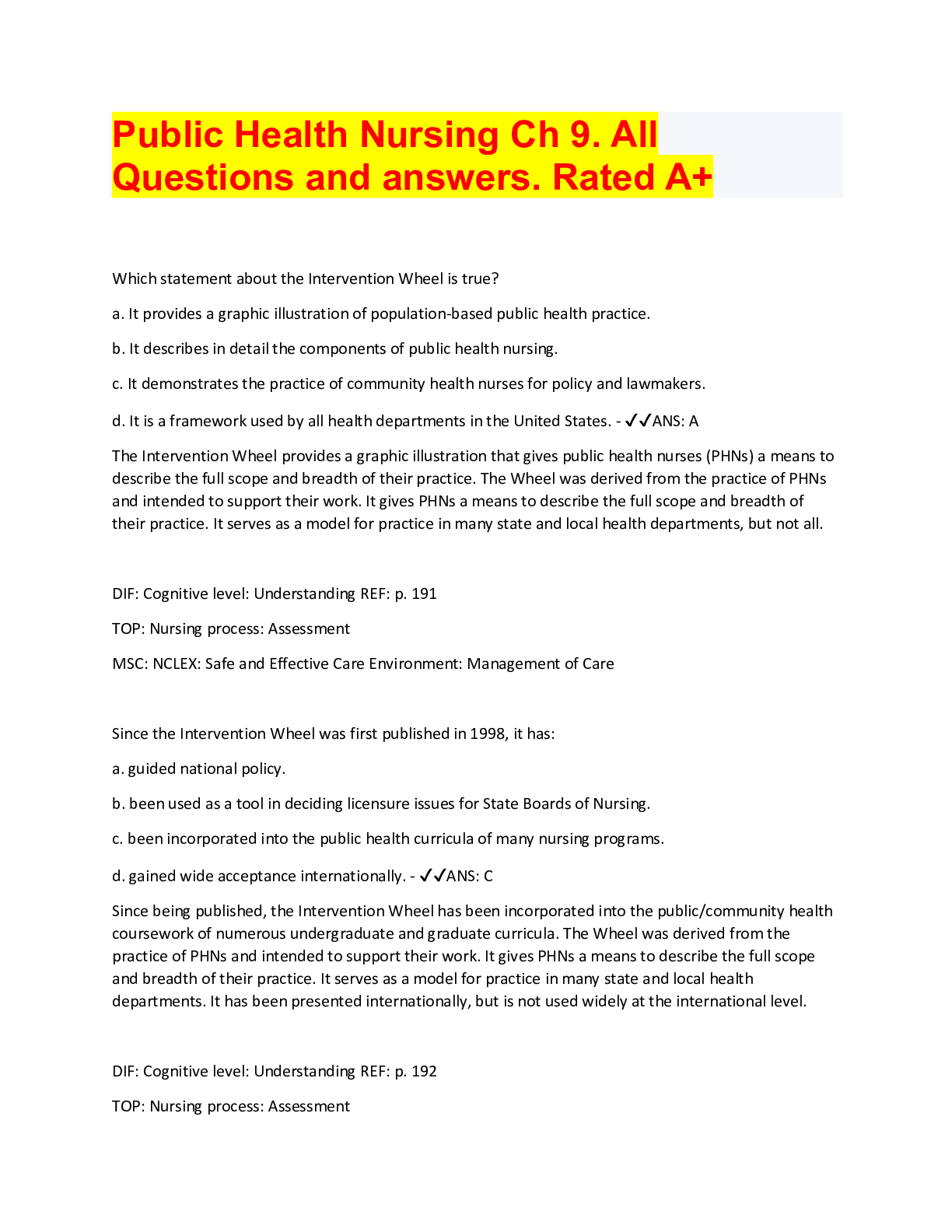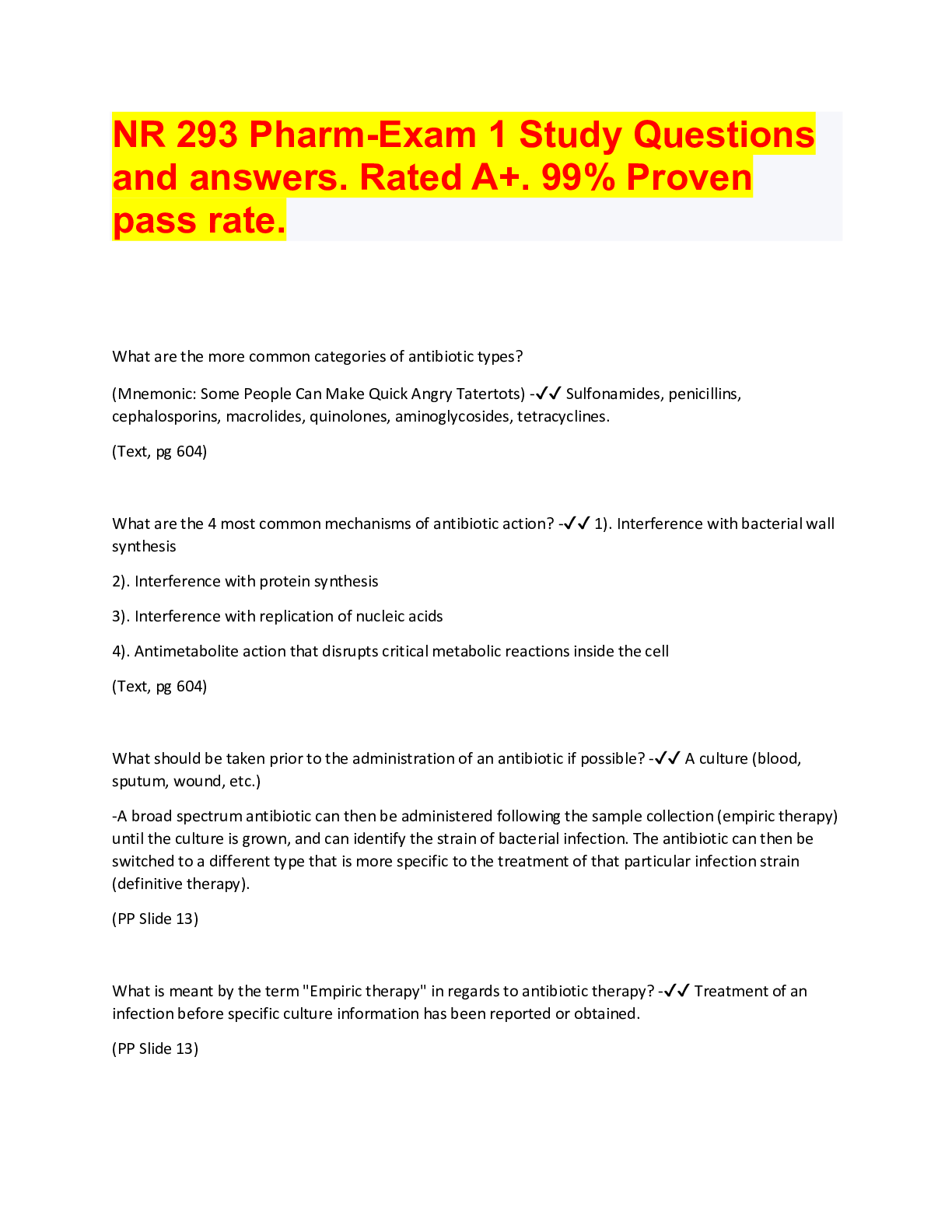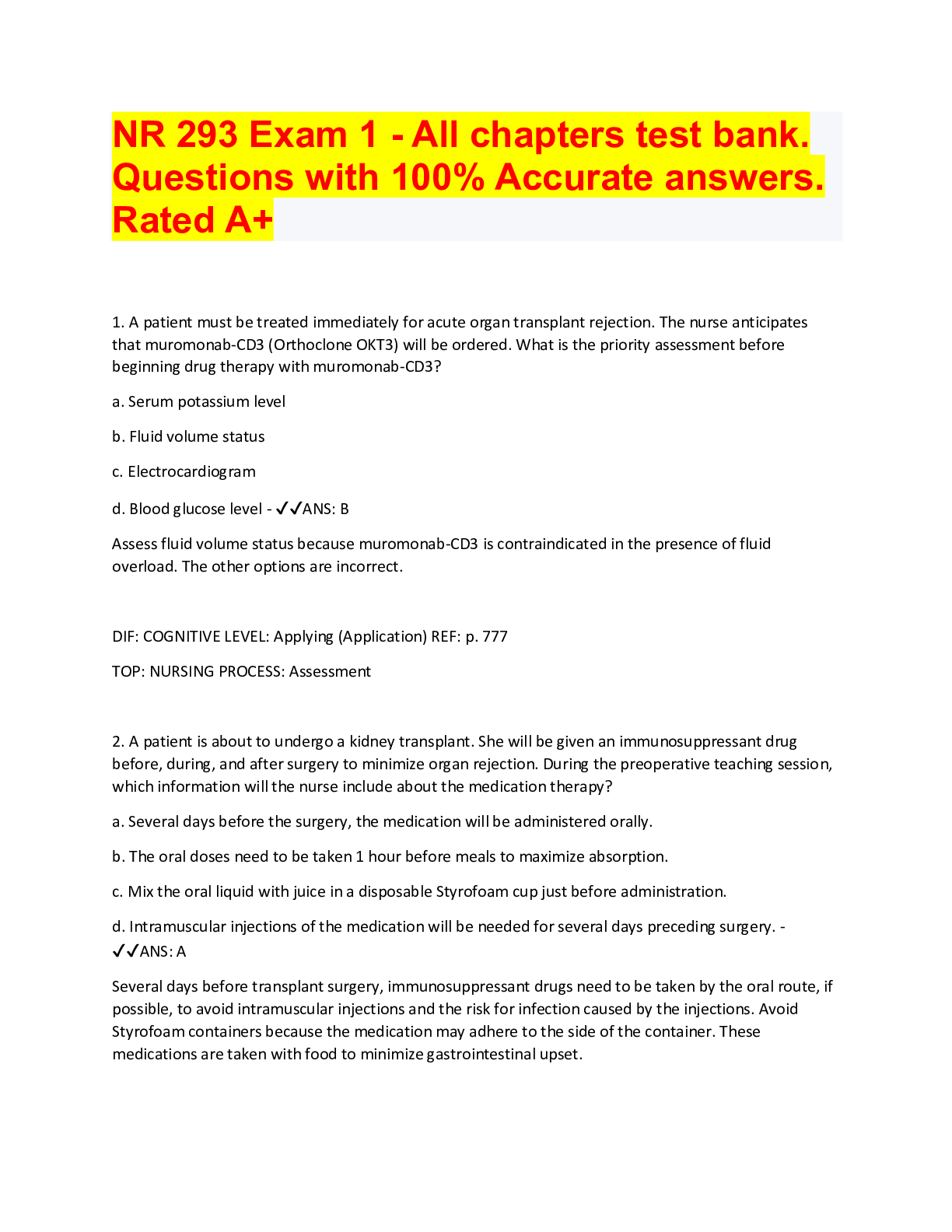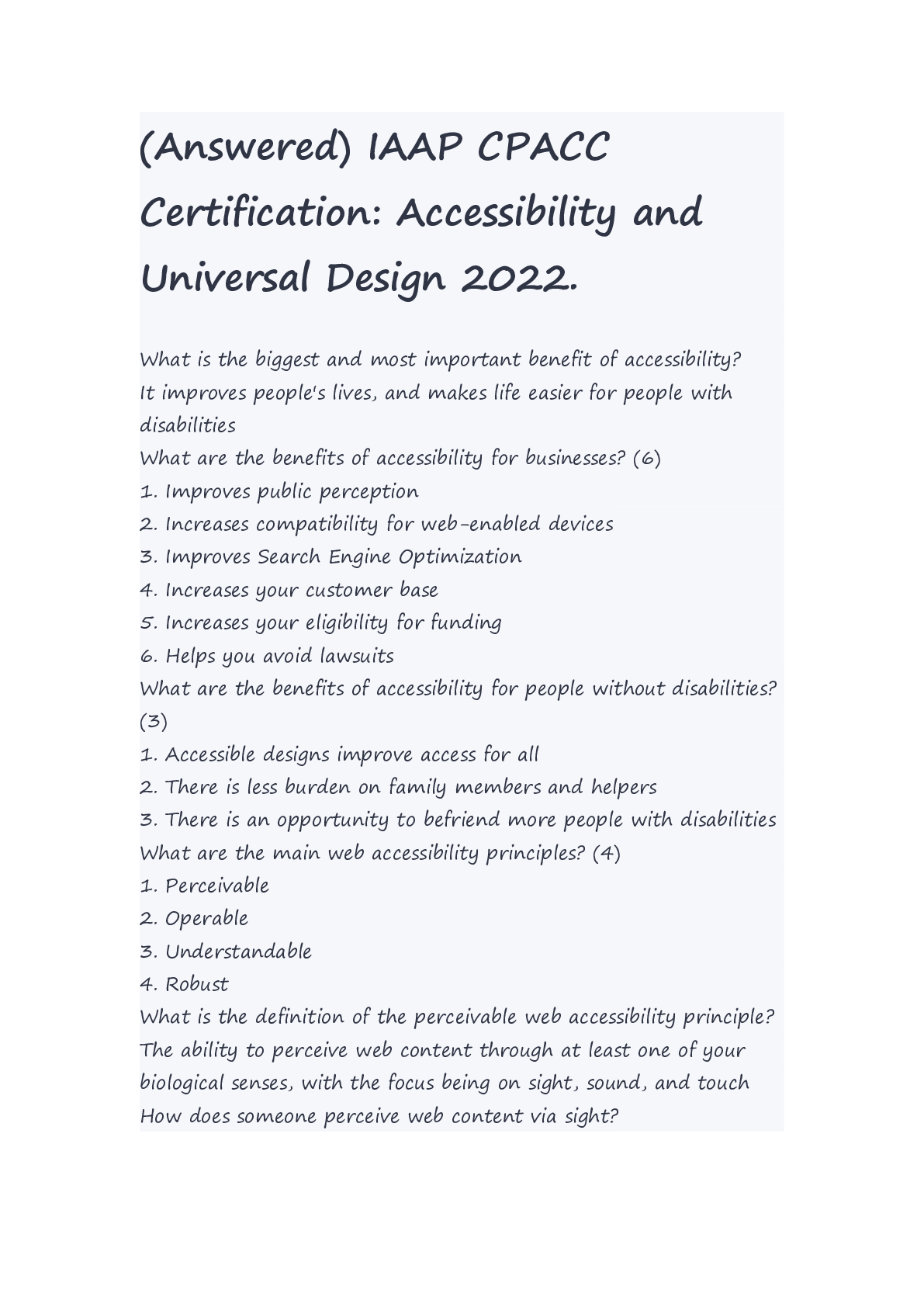*NURSING > QUESTIONS & ANSWERS > Prehospital Trauma Life Support (PHTLS) Review Test Questions. 100 % Accurate Answers. Rated A+ (All)
Prehospital Trauma Life Support (PHTLS) Review Test Questions. 100 % Accurate Answers. Rated A+
Document Content and Description Below
Inadequate Perfusion / Energy production at the cellular level. - ☑☑Shock Why are case studies important in the Hospital? - ☑☑It gives us evidence based practice. What is the definition ... of anaerobic metabolism? - ☑☑Without Oxygen When does hemorrhage control start in the trauma assessment? - ☑☑Right away, first thing to be done. Why do we needle decompress somebody? - ☑☑If there is an increase work of breathing / Absent lung sounds / Inadequate perfusion What is the easiest way to open the airway of a trauma patient? - ☑☑Jaw Thrust What is a problem with intubation? - ☑☑It requires a lot of practice. When you arrive on scene and find your patient with their airway full of blood, how long should you suction for? - ☑☑Until the airway is complete clear from blood. What is the best way to confirm you have good a good ET Tube in place? - ☑☑End Tidal When should you start the secondary assessment on a trauma patient? - ☑☑When time and situation allows. What are some pre-arrival factors you should be considering upon arrival to your designated call? - ☑☑Time of day / Weather / Location / Hazards Involved / Possible additional needs What is the main reason for a primary assessment on a trauma patient? - ☑☑To identify and treat immediate life threats. What is the most common type of shock and what is the main cause of shock? - ☑☑Hemorrhagic Shock due to either uncontrolled internal / external hemorrhage When wanting to get a patient off scene quickly what is a piece of equipment that is best suited for this situation? - ☑☑Scoop Stretcher What is the first thing that should be treated on a trauma patient? And once that is treated what should you focus on next? - ☑☑First treat the ABC's then any other immediate life threats What is one of the earliest signs you may see on a patient who is starting to go into shock? - ☑☑Increased Ventilatory Rate When you show up on scene and find your patient bleeding out, what are the two steps you should take to take care of that bleeding situation? - ☑☑Step 1 = direct pressure / step 2 = apply tourniquet [Show More]
Last updated: 1 year ago
Preview 1 out of 4 pages
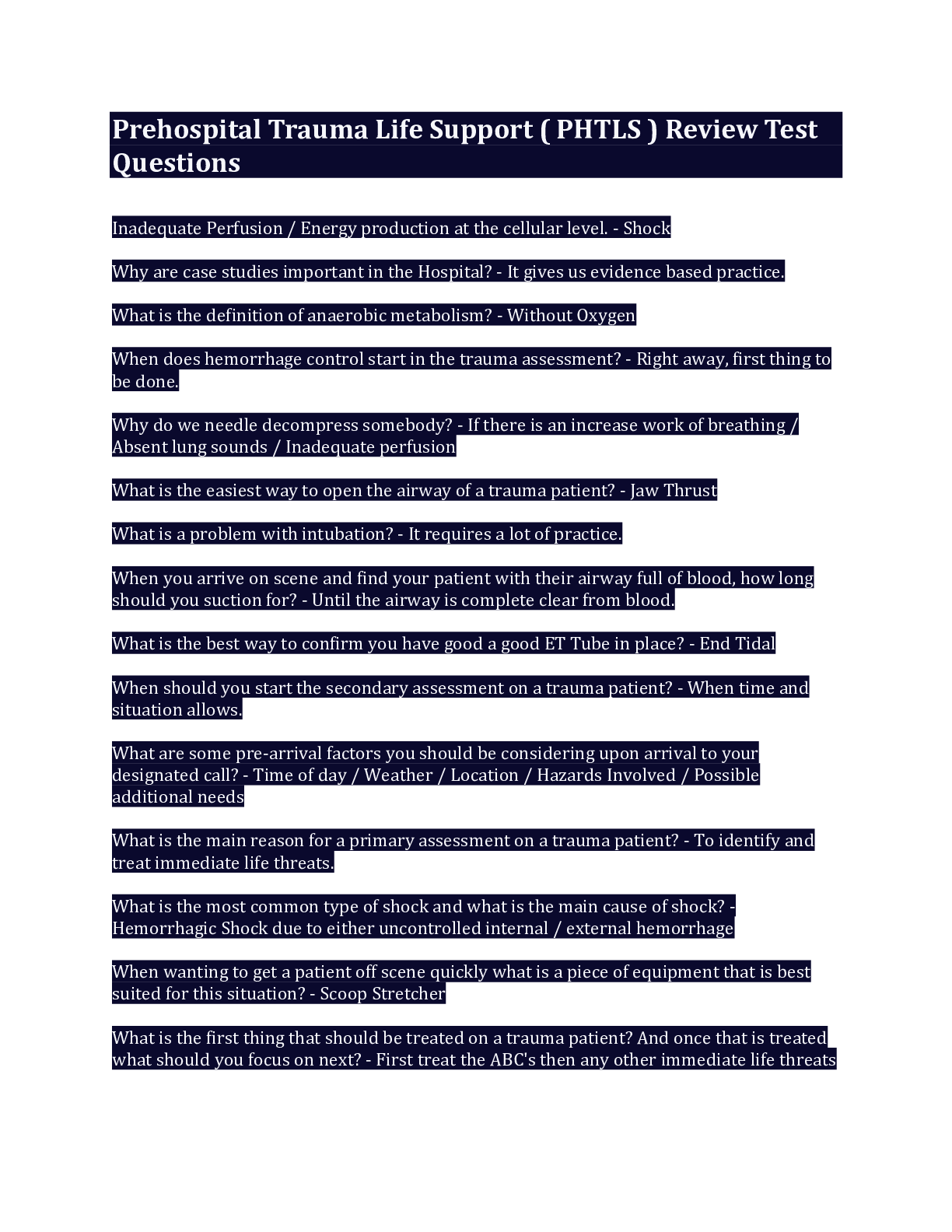
Reviews( 0 )
Document information
Connected school, study & course
About the document
Uploaded On
Aug 12, 2022
Number of pages
4
Written in
Additional information
This document has been written for:
Uploaded
Aug 12, 2022
Downloads
0
Views
58



